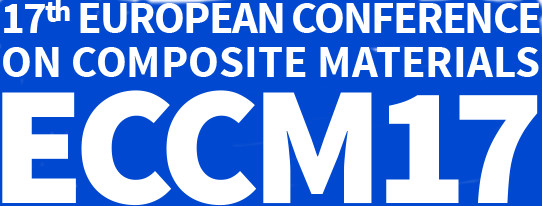

App-Einstellungen:
EFFECT OF THE RATIO OF CUTTING DEPTH TO EDGE DIAMETER ON CHIP FORMATION MECHANISM IN MACHINING OF CFRPS
Youliang Su (Dalian University of Technology) Fuji Wang (Dalian University of Technology) Zhenyuan Jia (Dalian University of Technology) Junwei Yin (Dalian University of Technology) Rao Fu (Dalian University of Technology) Bin Niu (Dalian University of Technology) Wei Liu (Dalian University of Technology)
This paper studies the chip formation mechanism in machining of CFRPs. The characteristic of cutting forces and the specific energy under different ratios of cutting depth to cutting edge diameter (RDD) are investigated by the orthogonal machining of CFRPs. And the tool-material interactions are analyzed to investigate the chip formation mechanism.
HIGH SPEED GRINDING OF PARTICULATE REINFORCED TITANIUM MATRIX COMPOSITES USING MONOLAYER BRAZED CBN WHEEL
Changyong Yang (Nanjing University of Aeronautics and Astronautics) Xinxin Xi (Nanjing University of Aeronautics and Astronautics) W.F. Ding (Nanjing University of Aeronautics and Astronautics)
High speed grinding experiments of particulate reinforced titanium matrix composites (PTMCs) were carried out using a monolayer brazed CBN superabrasive wheel at the wheel speed of 120 m/s. The grinding performance of PTMCs was examined and evaluated in terms of grinding forces, grinding temperature, surface defects and subsurface characteristics.
IMPACT OF THE ABRASIVE WATER JET MILLING PROCESS ON THE DAMAGE AND SURFACE CHARACTERISTICS OF CFRP COMPOSITE.
Akshay Hejjaji (Institut Clément Ader) Redouane Zitoune (University of Toulouse) Laurent Crouzeix (Institut Clément Ader) Francis Collombet (Institut Clément Ader) Sabine Le Roux (Institut Clément Ader)
This work investigates the influence of abrasive water jet milling on the surface characteristics and damage of CFRP specimens. Jet pressure and milling path strategy are important parameters that affect the machining quality and damage (crater).
INFLUENCE OF AMPLITUDE AND FREQUENCY ON CUTTING FORCE AND SURFACE INTEGRITY DURING ULTRASONIC VIBRATION ASSISTED GRINDING CFRP
Yan Chen (Nanjing University of Aeronautics and Astronautics) Yucan Fu (Nanjing University of Aeronautics and Astronautics)
The feasibility of varying amplitude and frequency was analyzed by changing the overhang length of tool. And the effect of amplitude and frequency on the quality of machining was discussed.
LASER CUTTING AND THE INFLUENCE ON THE MECHANICAL PROPERTIES OF LONG FIBRE REINFORCED CF/PPS AND CF/PEI
Sandra Royo Pérez (Element Materials Technology) Peter Hansen (Element Materials Technology) Richard Staehr (Laser Zentrum Hannover e.V.) Sven Bluemel (Laser Zentrum Hannover e.V.) Verena Wippo (Laser Zentrum Hannover e.V.) Stefan Bastick (Element Materials Technology) Peter Jäschke (Laser Zentrum Hannover e.V.)
This paper investigates the mechanical properties of laser cut thermoplastic carbon fibre reinforced plastics (CFRP) compared to conventionally machined specimens, mainly mechanical cutting, using standard and non-standard test geometries.
THE IMPACT OF COOLING STRATEGIES AND FIXTURE OPTIONS ON THE THERMAL LOAD DURING LASER PROCESSING OF CARBON FIBRE REINFORCED THERMOPLASTICS
Richard Staehr (Laser Zentrum Hannover e.V.) Jasmin Lindner (LASER on demand GmbH) Sven Bluemel (Laser Zentrum Hannover e.V.) Oliver Meier (LASER on demand GmbH) Peter Jäschke (Laser Zentrum Hannover e.V.) Oliver Suttmann (Laser Zentrum Hannover e.V.) L. Overmeyer (Laser Zentrum Hannover e.V.)
This investigation focusses on different fixture and cooling options and investigates their impact on the thermal load during laser processing of CFRP. The material temperature was measured by thermography and correlated with the heat affected zone.
AUTOMATED APPLICATION OF LIGHTNING PROTECTION MATERIAL ON DOUBLE CURVED FUSELAGE PANELS OF CARBON FIBRE AIRCRAFTS – FROM THE IDEA TO THE APPLICATION.
Marcin Malecha (German Aerospace Center) Clemens Schmidt-Eisenlohr (German Aerospace Center) Patrick Kaufmann (German Aerospace Center) Christian Rähtz (German Aerospace Center)
We're presenting our solution for automated application of lightning strike protection material on double curved fuselage parts. Our approach speeds up the lay-up, shortens the process and allows application of wider cuts compare to manual process.
AUTOMATING LAYUP OF SHEED PREPREG ON COMPLEX MOULDS
Michael Elkington (University of Bristol) Carwyn Ward (University of Bristol) Kevin Potter (University of Bristol)
A new two-stage method for the automated manufacture of high performance composites components is presented which uses multiple end effectors to combine the flexibility of Hand Layup with the speed and consistency of existing automated systems.
ROBOT-FORMING OF PREPREG STACKS - DEVELOPMENT OF EQUIPMENT AND METHODS
Andreas Björnsson (Linköping University) Marie Jonsson (Swerea SICOMP) Jan Erik Lindbäck (SAAB Aerostructures) Malin Åkermo (KTH Royal Institute of Technology) Kerstin Johansen (Linköping University)
The development of tools and the establishment of a forming-sequence for sequential forming of prepreg stacks to an Ω-shaped geometry using a standard dual-arm robot is presented. Tests show that stacks can be formed using the developed method.
A MODEL-BASED CONCEPT FOR AN OPTIMIZED RESIN TRANSFER MOULDING PROCESS
Patrick Hergan (Montanuniversitaet Leoben) Ewald Fauster (Montanuniversitaet Leoben) Ralf Schledjewski (Montanuniversitaet Leoben)
A concept of optimizing the resin transfer moulding process by using model modules will be presented. Therefore basic models which describe he major sub-domains of the process will be shown.
